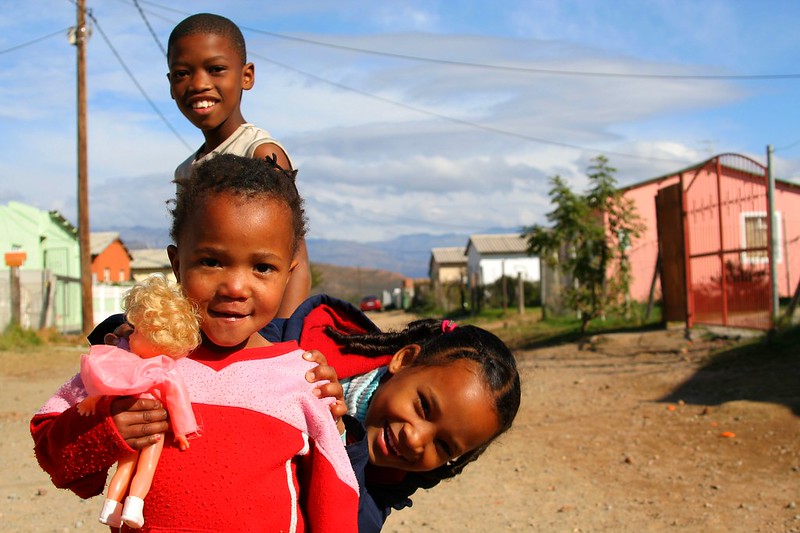Everything About Inequality And Poverty In South Africa
 South Africa is a popular tourist destination for adventure seekers and safari lovers of the world. Its expansive national parks and gorgeous coastal settlements like Cape Town offer travelers countless activities and scenic views. But despite its stunning exterior, extreme, seemingly inescapable inequality and poverty ransack the country, with 18.9% of the population living below the international poverty line.
South Africa is a popular tourist destination for adventure seekers and safari lovers of the world. Its expansive national parks and gorgeous coastal settlements like Cape Town offer travelers countless activities and scenic views. But despite its stunning exterior, extreme, seemingly inescapable inequality and poverty ransack the country, with 18.9% of the population living below the international poverty line.
In 2020, the United Nations (U.N.) and the World Bank ranked South Africa as the most financially unequal country in the world. The following is a look into poverty in South Africa.
Apartheid
Apartheid is the leading factor behind the inequality and poverty in South Africa. This era saw the forced physical and social separation of all racial groups. Black South Africans could not live with or marry white people. They could also not attend the same schools, live in the same neighborhoods or even walk on the same side of the street.
White South Africans experienced better schools, safer homes and superior health care compared to other South Africans. Although Apartheid is no longer an official policy, the effects have left Black South Africans severely disadvantaged socially and economically. At the end of the era of segregation, white South Africans had more than 90% of land ownership in the entire country, leaving the rest of South Africans with little wealth and a direct route to extreme, cyclical poverty.
Even though no laws directly prevent the social or economic advancement of the poor, this type of poverty is difficult to overcome.
Regional Poverty
Extreme poverty in South Africa is mainly concentrated in the eastern and northern regions of the country. Eastern Cape is the poorest municipality in South Africa with a poverty rate of 12.7% and 878,000 impoverished people. However, many other municipalities in these regions experience poverty at rates as high as 11.5% and no lower than around 5%. These same areas have poverty numbers above 600,000 people.
Female-Led Households
Households that females lead experience higher and more severe rates of poverty. In fact, female-led households experience poverty at a rate almost 17% higher than male-headed households. Female-headed households tend to be farther below the poverty line than their male-headed counterparts, meaning that these households have less access to education, clean water and sanitation.
High Rates of Unemployment
As of June 2023, unemployment in South Africa stood at 32.9%, one of the highest rates in the world. Nearly 5% of unemployed people qualify as time-related unemployed, meaning that they are available to and desire to work more hours than they currently do. In other words, many employed South Africans still feel, to a certain degree, unemployed. While one in three South Africans is unemployed and living off of federal grants, some employed individuals still require a higher income to truly survive.
This feeling of hopelessness and desire for more leads to a sense of poverty whether or not one technically qualifies as “impoverished.”
Below Average Health and Safety
South Africa is below average in terms of health and safety. More than one-quarter of people are unsatisfied with the quality of water. South Africa has massive amounts of air pollution and a life expectancy of 64 years old.
Unsafe communities exacerbate these factors. The country has a homicide rate of nearly 14% and more than 50% of people do not feel comfortable walking alone at night.
Overall, living conditions in South Africa range greatly from high-quality housing in wealthy neighborhoods to unsafe and impoverished communities that provide residents with little chance to escape cyclical poverty.
Future Outlook
Although some of these statistics seem daunting, there is good news. The South African government is proving its dedication to reducing poverty through huge amounts of spending on social grants. About 60% of federal spending goes toward social welfare programs that reach 16.6 million people every year. This welfare program includes old age grants for persons 60 years or older, who have a disability, veterans and different forms of child support, including foster child grants and care-dependency grants.
The social welfare program took off in the 1990s during the country’s early years of democracy as a temporary way to ease the inequality and pain caused by Apartheid. However, the program has become permanent and crucial to South African life. An estimated one-quarter of South Africans receive federal aid through this program, making it essential to maintaining a functioning economy and fighting poverty within South Africa.
Poverty in South Africa is more than a lack of sanitation, potable water and healthy food. Apartheid has created a rift in South Africa’s society. The nation is now characterized by unemployment, gender inequality and racism. However, continued government action, foreign aid and time may be enough to significantly reduce inequality and poverty in South Africa.
– Suzanne Ackley
Photo: Flickr
